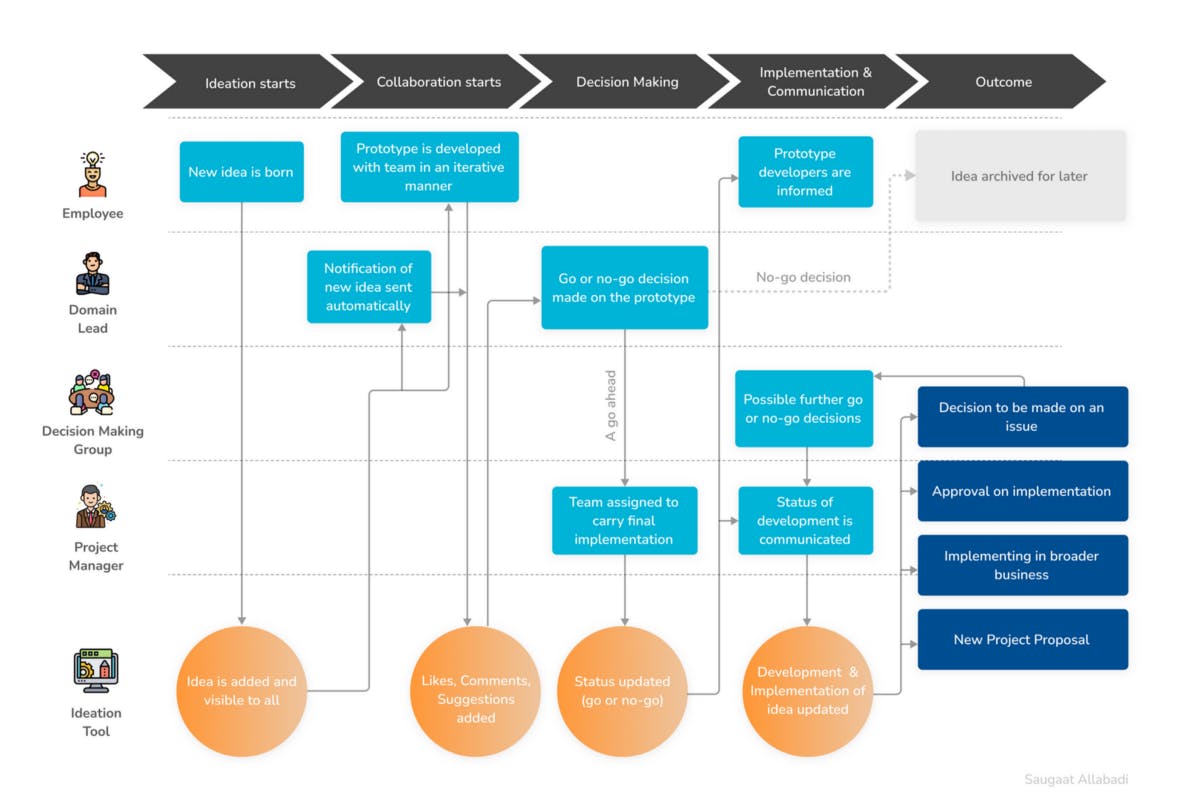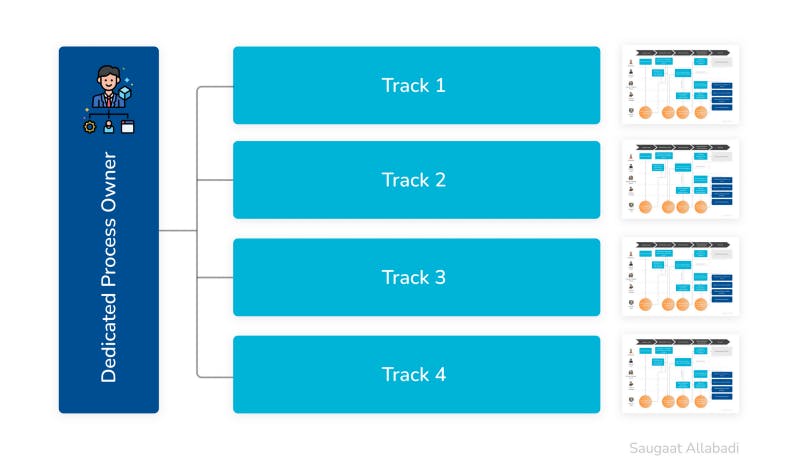Defining a pipeline for bringing ideas to life, at scale.
Every company has ideas, but when there’s no defined process in place, your next big idea could end up buried in your manager’s inbox.
The successful exploitation of new ideas is crucial to a business being able to improve its processes, bring new and improved products and services to market, increase its efficiency and, most importantly, improve its profitability.

However, ideas are cheap. Execution is everything. To reap the rewards of your thinking, you need to act and further develop your idea. By defining a pipeline for managing the ideas, you’ll introduce clear responsibilities that will hold people accountable for progress, as well as create a set of common rules that make the process transparent and understandable for everyone.
Let’s look at different idea management models and talk a little bit about the suitability for different types of companies.
The ‘Not-so-ideal’ Pipelines 👎
Every company has ideas and every company makes decisions on how to proceed with these ideas, one way or the other.
When there’s no defined process in place, the culture and operations of your company will define how ideas will be managed. There are also some models that are less than ideal, even if they were formal.
The two most common ones are:
1. The Wild West 👾
If you have no idea what to do with new ideas in your company, you can probably be classified under this model. Typically people have an idea, they tell their colleagues or immediate manager about it. The manager has tons to do, and he/she might forget all about it later. This oftentimes frustrates the employee even with their daily work, and they start to turn more and more demotivated, resentful and pessimistic.

not-so-ideal way to share an idea
There are really just two ways to get something to happen in this model:
- Just DIY (do it yourself)
- Shout around loud enough until someone is forced to take action
If you identify yourself with this “process”, you could introduce a rudimentary process that requires managers to collect suggestions from their employees and report to their superiors once a month. This could be your start towards positive development and a hallmark of a quick win.
2. Suggestion box 📮

a box for “outside the box” ideas
A suggestion box can have many forms:
- A physical suggestion box
- A dedication email inbox
- An online form on the company’s intranet
It is then monitored typically by a single person and is “unboxed” once a quarter.
Even if the intention is well, the execution of this process is oftentimes terrible. Furthermore, people leaving the suggestion will typically never hear of what happened to their idea, especially if it’s a no-go decision.
This has some fundamental flaws due to its non-transparent nature:
- The slowness of the project leads to frustrated employees.
- Since the first idea is almost always not ready to be implemented and requires further refinement. This leads to fewer ideas in the box worth taking forward.
- Difficulty in avoiding bias in decision making, as the ideas are typically evaluated by a single party.
Clearly, there are some serious downsides going forward with either of those models. Now let’s look at some pipelines I believe can actually get the ball rolling.
The Recommended Pipelines 👍
Typically, you would see two different kinds of models in companies that are successful in this area.
1. For SME (<500 employees) 🚀
The first one is for Small and Medium Enterprises. The idea is simple. The employees come up with new ideas and add them to an Ideation tool, which then notifies people who are responsible for the domain of the idea, called DomainLeads, after which the idea is then collaboratively developed further.

Decisions are then made in a group meeting or similar, which gathers in regular intervals, on whether the ideas are to be implemented or not. If not, the no-go decision is communicated back to the employees automatically via the system after its status is changed.
If the idea is given green light, the idea might be implemented by the same business unit, or a project team can be formed to implement the idea.
The project manager is always responsible for communicating the status of the idea back to interested stakeholders (employees interested, domain leads, decision-making group) via the system, which can be as quick as a couple of clicks or a one-sentence status update.
If the implementation is a large project, further go/no-go decisions need to be made by the decision-making group.
2. For Large Enterprises (>500 employees) 🏢
This model is a necessity if you have a large portfolio of projects and would like to manage ideation separately for each large project (as you probably should).
There might be a need for a “product-related ideation” or/and general “company-wide process development”. These are very different by nature so it just makes sense to have different processes for each of these use cases. Let’s call them “tracks”. For now, consider a track to be an instance of the SME model above.
However, when you have several separate ideation tracks in place, you should have some kind of a dedicated process owner/ group in place to oversee the different tracks. This can be just one person, but ideally a recurring meeting of either executives and/or the representatives of the different tracks.

The role of this group is to support the decision-makers of the different tracks to monitor their performance and improve their processes. However, this party can also help in cases where an idea is overlapping with other tracks.
Unsure if this model is for your company? Start the implementation small with the SME Model above. Then once you start expanding to other use cases, you’ll soon realize if you need to implement those use cases as their own tracks.
The Dream 🌈
To be completely honest, none of these models is ideal. They all have one thing in common: you basically need to wait for a decision to be made about an idea before anything happens. This has two major downsides:
- It takes time and adds overhead
- Many good ideas will inevitably be rejected
In business, time is of the essence, and no matter how efficient you’ll make the process, waiting for a decision still always prolongs things and adds overhead costs.
The dream is to have a company where every employee understands their own job and the business as a whole well and is capable of proactively improving every facet of the way they work. And occasionally they’d even come up with really big ideas and build the first versions of those themselves, really taking the company to new heights.
The dream is to have every employee understand the business as a whole and proactively enhance and optimize every facet of the way they work.
Conclusion 🌗
Change takes time and is inevitably gradual. There are obviously many ways you can build the capabilities for innovation and having an efficient idea management process is just one of them.
However, the models introduced above are practical ways of getting started on that path. They’ll help you build an engaged culture that appreciates participation and empowers people to innovate.
The good thing is that you don’t need to (and probably shouldn’t if you haven’t done anything like this before) make the process company-wide right away. Start with just a single business unit as an experiment — see how the process works and how people respond. Learn and adjust your approach, and after expanding gradually, you’ll see positive results! ✌️